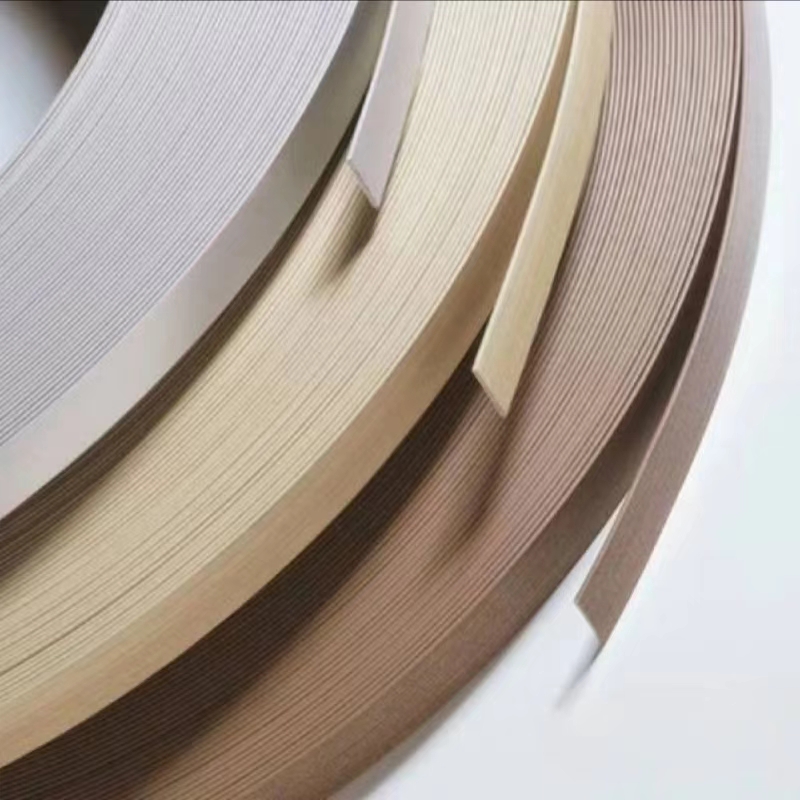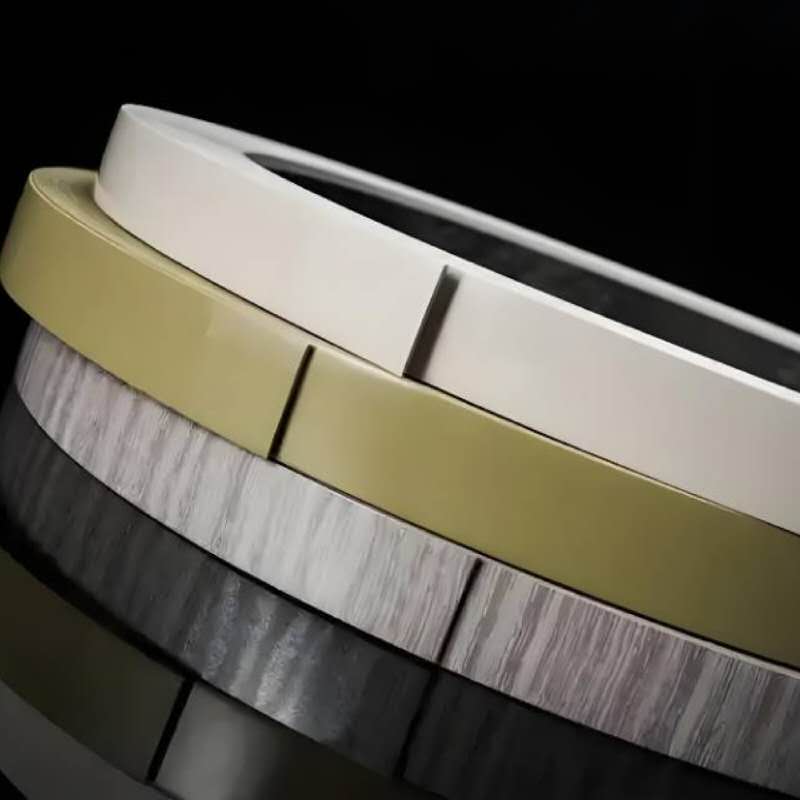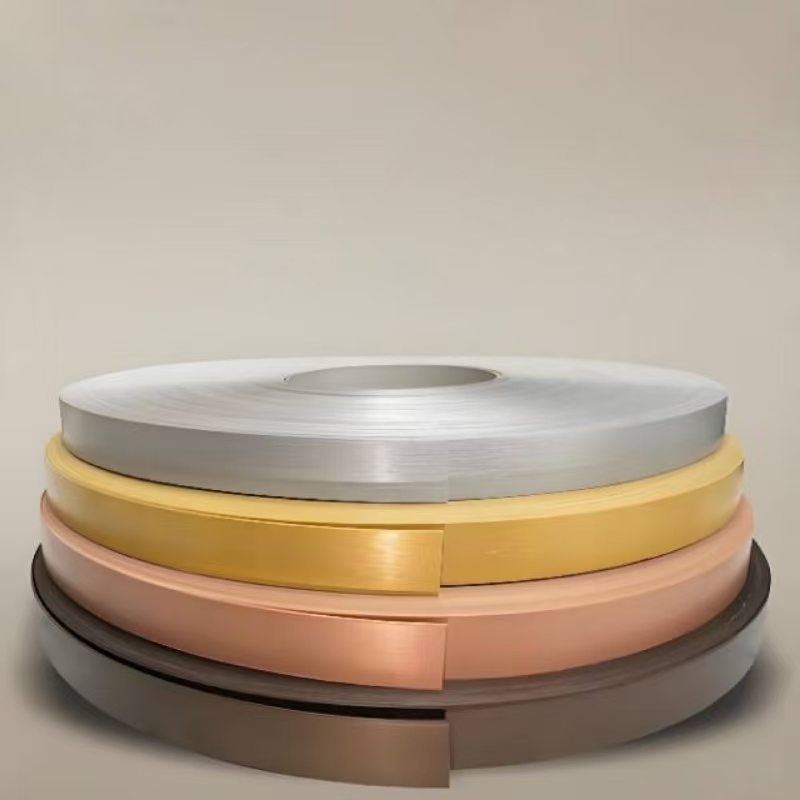In the fields of furniture manufacturing, woodworking and interior decoration, the use of edge banding is very common. They can not only enhance the aesthetics of the product, but also increase its durability. Among the many edge banding materials, ABS edge banding has gradually become an ideal choice due to its superior performance and wide application.
So, what is abs edge strip? What are its unique advantages and application scenarios? This article will explore ABS edge banding and its related products in detail to help you fully understand this industry standard product.

What is ABS edge banding?
ABS edge banding is an edge banding material made of ABS resin (Acrylonitrile Butadiene Styrene). ABS is a thermoplastic made of acrylonitrile (Acrylonitrile), butadiene (Butadiene) and styrene (Styrene), which has high strength, rigidity and impact resistance. ABS edge banding is usually used for edge banding of furniture panels and wood materials to achieve aesthetic, protective and durable effects.
The main function of abs edge strip is to enhance the appearance and service life of furniture by sealing the edge of the board to prevent the surface of the board from moisture, corrosion, wear and cracking. In addition, the color and texture of abs edge strip can be selected according to actual needs, and can often be consistent with the color and texture of the main material of the furniture, thereby enhancing the overall aesthetics.
What are the advantages of ABS edge banding?
The reason why abs edge strip has become the mainstream choice in the modern furniture industry is inseparable from its own unique advantages. The following are several main features of abs edge strip:
1. Excellent impact resistance and wear resistance: ABS edge banding has very good impact resistance, which can effectively resist bumps and friction in daily use and maintain the integrity of the edge of the furniture. This high impact resistance makes abs edge strip particularly suitable for high-frequency furniture, such as kitchen, study and office furniture.
2. Excellent chemical resistance: ABS material has good chemical corrosion resistance. It can resist most common acids, alkalis and solvents, which makes abs edge strip in some chemical-sensitive environments. Long-term stability can also be maintained.
3. Strong environmental protection: Modern consumers are paying more and more attention to the environmental protection of furniture materials, and ABS, as a non-toxic and harmless material, is environmentally friendly during production and use. The materials used in the production process of abs edge strip can be recycled and reused, which is a highlight for consumers who pay attention to environmental protection.
4. Good processability and easy customization: ABS edge banding has very good processability. It can be installed by hot melting, cold pressing, etc., which is convenient for construction and long-lasting. In addition, the surface of abs edge strip can be printed, filmed or embossed according to needs to meet the needs of different styles and appearances. Therefore, ABS edge strip is suitable for a variety of furniture designs and can be perfectly combined with panels of various materials (such as medium-density fiberboard, particleboard, etc.).
5. Rich color and texture selection: ABS edge banding not only performs well in physical properties, but also has a very diverse appearance. There are abs edge strips of various colors, patterns and textures on the market, which can be perfectly matched with different styles of furniture and decoration styles. For example, you can choose a variety of appearance effects such as wood grain, solid color, gloss or matte to meet consumers' needs for personalization and aesthetics.
6. Heat resistance and aging resistance: ABS edge banding has good heat resistance and can still maintain good performance in high temperature environments. Compared with other edge banding materials, ABS edge banding has strong aging resistance and is not easy to fade, become brittle or break. Therefore, ABS edge banding can not only withstand daily friction and collision, but also be used in more extreme environments to adapt to different climates and usage conditions.

ABS edge banding and other edge banding materials: Which one is the best?
There are many types of edge banding materials on the market. In addition to abs edge strip, PVC edge banding, wooden edge banding, aluminum alloy edge banding, etc. are also common. Each edge banding material has its unique advantages and applicable scenarios, but abs edge strip has gradually become one of the most popular choices due to its comprehensive performance. The following will compare abs edge strip with other edge banding materials through several key indicators to help consumers make a more informed choice.
1. ABS vs. PVC edge banding
PVC edge banding is also a common edge banding material, mainly made of polyvinyl chloride (PVC). Compared with abs edge strip, PVC edge banding has lower hardness and strength. Although it also has good water resistance and corrosion resistance, it is slightly inferior in impact resistance and wear resistance. PVC edge banding is more suitable for environments with lower impact resistance requirements, while ABS edge banding performs better in terms of furniture edge protection, durability and aesthetics.
2. ABS vs. Wood edge banding
Wood edge banding is usually made of solid wood or wood composite materials, with a natural texture and appearance, which can be perfectly integrated into various wooden furniture. However, the disadvantage of wooden edge banding is that it is easily deformed and cracked due to moisture, and has poor wear resistance. ABS edge banding has stronger water resistance, durability and impact resistance, so it is more reliable in long-term use. Although wooden edge banding has a unique visual effect in some high-end furniture, ABS edge banding is more suitable for daily use and the mass market.
3. ABS and aluminum alloy edge banding
Aluminum alloy edge banding, as a metal material, has excellent corrosion resistance, wear resistance and high strength, and is widely used in some modern and industrial style furniture designs. However, aluminum alloy edge banding is heavy, complicated to install, and expensive. In contrast, ABS edge banding not only has similar wear resistance and strength, but is lighter and easier to install, so it is more popular in the general furniture market.

ABS edge banding installation method
ABS edge banding is installed in a similar way to other edge banding materials. Common installation methods include hot melt, cold press, and glue bonding. The following are common abs edge strip installation steps:
1. Preparation: Before installing ABS edge banding, you need to prepare edge banding, scissors or cutting tools, hot melt glue gun or cold press, cleaning tools, etc. Make sure the installation surface is clean and dry to ensure the adhesion of glue or tape.
2. Cutting the ABS edge banding: Use scissors or cutting tools to cut the ABS edge banding to the appropriate length according to the size of the board to be edge-banded. Usually, the length of the edge banding should be slightly longer than the actual length to allow for fine-tuning during installation.
3. Heating the ABS edge banding: If the ABS edge banding is installed using hot melt, the edge banding needs to be heated with a hot melt glue gun to soften it and make it easier to fit the edge of the board. During the heating process, avoid excessive temperatures that may cause deformation or damage to the edge banding.
4. Fitting the abs edge strip: Place the heated ABS edge strip close to the edge of the board to ensure that the edge banding fits the edge of the board completely. Use a scraper to gently press to ensure that the edge banding is firmly attached.
5. Trimming the edge: After installation, use a knife to trim off the excess ABS edge strip to ensure a neat edge. If necessary, you can also perform detailed trimming to ensure that the abs edge strip fits perfectly with the edge of the board.

High-Quality Edge Banding from Dongguan Tingjie Decoration Materials Co., Ltd.
Looking to buy high-quality edge banding materials? Dongguan Tingjie Decoration Materials Co., Ltd. offers a vast selection of PVC and ABS edge banding strips, wood grain options, and other T-type and U-type profiles. Based in Dongguan, China, our company is dedicated to providing competitive prices and wholesale rates for customers worldwide. Whether you are looking for low-cost solutions or high-quality custom edge banding products, we are your go-to manufacturer.




